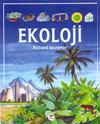Pyrolysis of hyperaccumulator plants used for the phytoremediation of lead contaminated soil.
Q3 Environmental Science
引用次数: 3
Abstract
This study focuses on the phytoremediation of lead (Pb) contaminated soil by hyperaccumulator plants. In this study, pyrolysis was utilized for the stabilization of Pb into a solid product. In the first stage of the study, three types of phytoremediation plants were used, rape (Brassica napus), sunflower (Helianthus annuus), and corn (Zea mays). Their seeds were sown in simulated soils prepared with the addition of Pb compounds in a laboratory. The effect of chelate on the remediation capacity of the plants was investigated by the addition of EDTA in different concentrations. In this way, the transportation of Pb from the contaminated soils to the plants was examined. In the second stage, the initial plant compositions were determined by elemental analysis (C, H, N, and S), as well as a moisture, ash, volatile matter, and fixed carbon analysis. The contaminated hyperaccumulator plants were pyrolyzed at 500°C, with a heating rate of 35° C/min, in a fixed bed stainless steel (380 S) 240 cm 3 reactor. After pyrolysis, the Pb contents of the solid and liquid products were determined. A Toxicity Characteristics Leaching Procedure (TCLP) analysis was also utilized for the solid product. In this study, high phytoremediation efficiencies were observed for the phytoremediation of Pb contaminated soil using sunflower, corn, and rape, especially in the case of the chelate addition. Of the three plants, the best Pb removal efficiency (92%) from the soil was obtained with the rape. According to the pyrolysis results, the highest yields of liquid and solid products were obtained from the sunflower with gas products being obtained from the corn pyrolysis.超富集植物热解修复铅污染土壤的研究。
研究了超富集植物对铅污染土壤的修复作用。在本研究中,利用热解将Pb稳定为固体产物。第一阶段采用油菜(Brassica napus)、向日葵(Helianthus annuus)和玉米(Zea mays) 3种植物修复植物。他们的种子播种在模拟土壤添加铅化合物在实验室。通过添加不同浓度的EDTA,考察了螯合物对植物修复能力的影响。通过这种方法,研究了铅从污染土壤向植物的迁移。在第二阶段,通过元素分析(C、H、N和S)以及水分、灰分、挥发物和固定碳分析确定初始植物组成。在固定床不锈钢(380 S) 240 cm 3反应器中,以500°C、35°C/min的升温速率对污染的超蓄能植物进行热解。热解后测定固体产物和液体产物的Pb含量。毒性特征浸出程序(TCLP)分析也被用于固体产品。本研究发现,向日葵、玉米和油菜对铅污染土壤的植物修复效果较好,特别是在添加螯合物的情况下。3种植物中,油菜对土壤铅的去除率最高,达92%。从热解结果来看,向日葵热解的液体和固体产物收率最高,玉米热解的气体产物收率最高。
本文章由计算机程序翻译,如有差异,请以英文原文为准。
求助全文
约1分钟内获得全文
求助全文
来源期刊

Ekoloji
环境科学-生态学
CiteScore
1.10
自引率
0.00%
发文量
0
审稿时长
>12 weeks
期刊介绍:
Cessation. Ekoloji is an international journal that focuses on papers that report results from original research on all disciplines engaged in the field of environmental research. We welcome articles that cover the entire spectrum of environmental problems and environmental pollutants, whether chemical, biological or physical. Its coverage extends to all environmentally related issues: air and water pollution, solid waste, noise, recycling, natural resources, ecology and environmental protection. It includes articles on basic and applied environmental pollution research, including environmental engineering and environmental health. All types of pollution are covered, including atmospheric pollutants, detergents, fertilizers, industrial effluents, metals, mining wastes, oil, pesticides, plastics, radioactive materials and sewage. It also includes research papers on ecological and environmental issues such as climate change, biodiversity. The primary criteria for publication are scientific quality and ecological/environmental significance.
The journal will be read and contributed to by biologists, applied ecologists, environmental scientists, natural resource specialists, environmental engineers, environmental health specialists, agro-ecologists, veterinaries, agricultural engineers, landscape planners and designers. The journal welcomes full "research papers" and short "research notes", only in the English language.
 求助内容:
求助内容: 应助结果提醒方式:
应助结果提醒方式:


